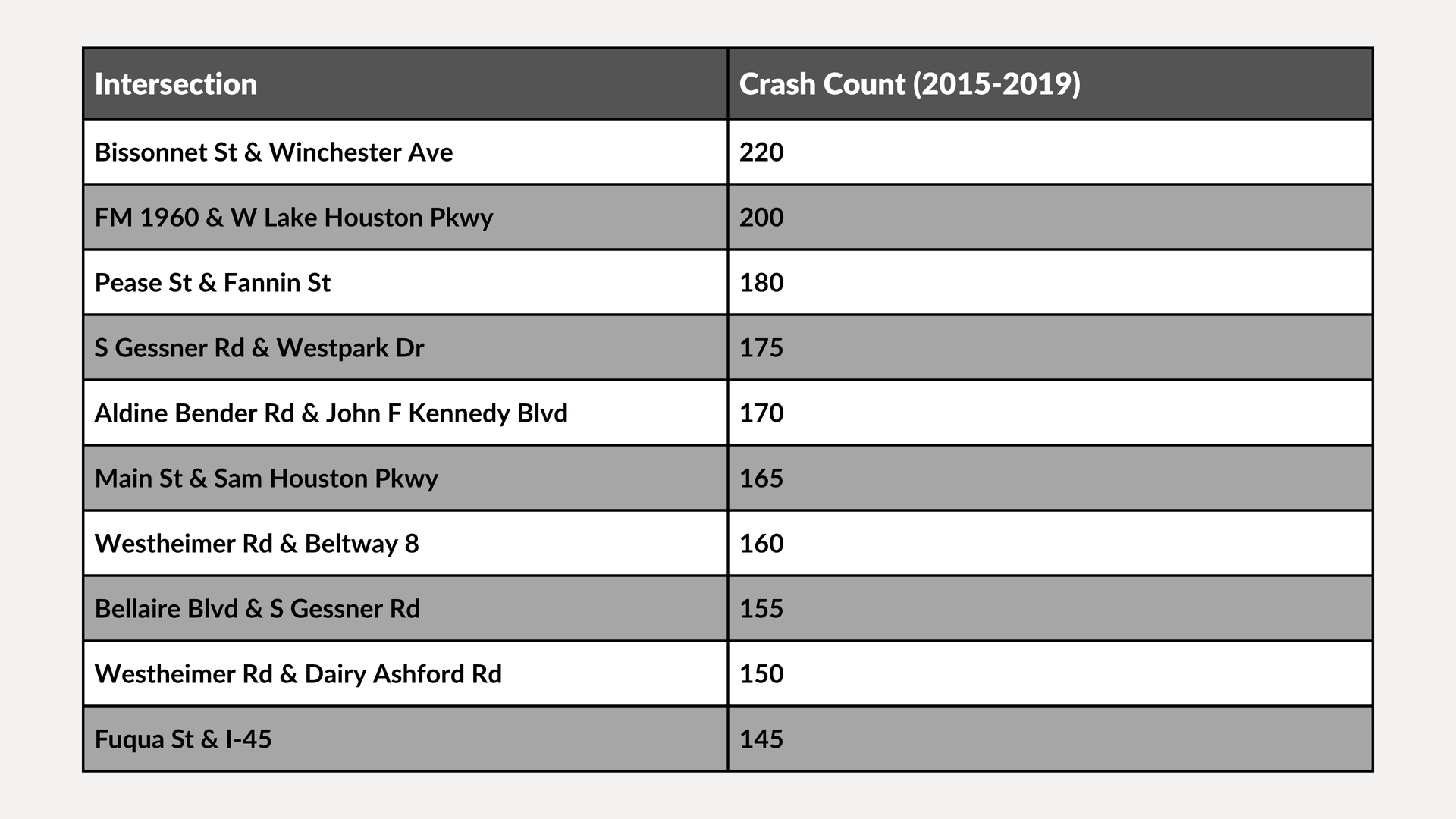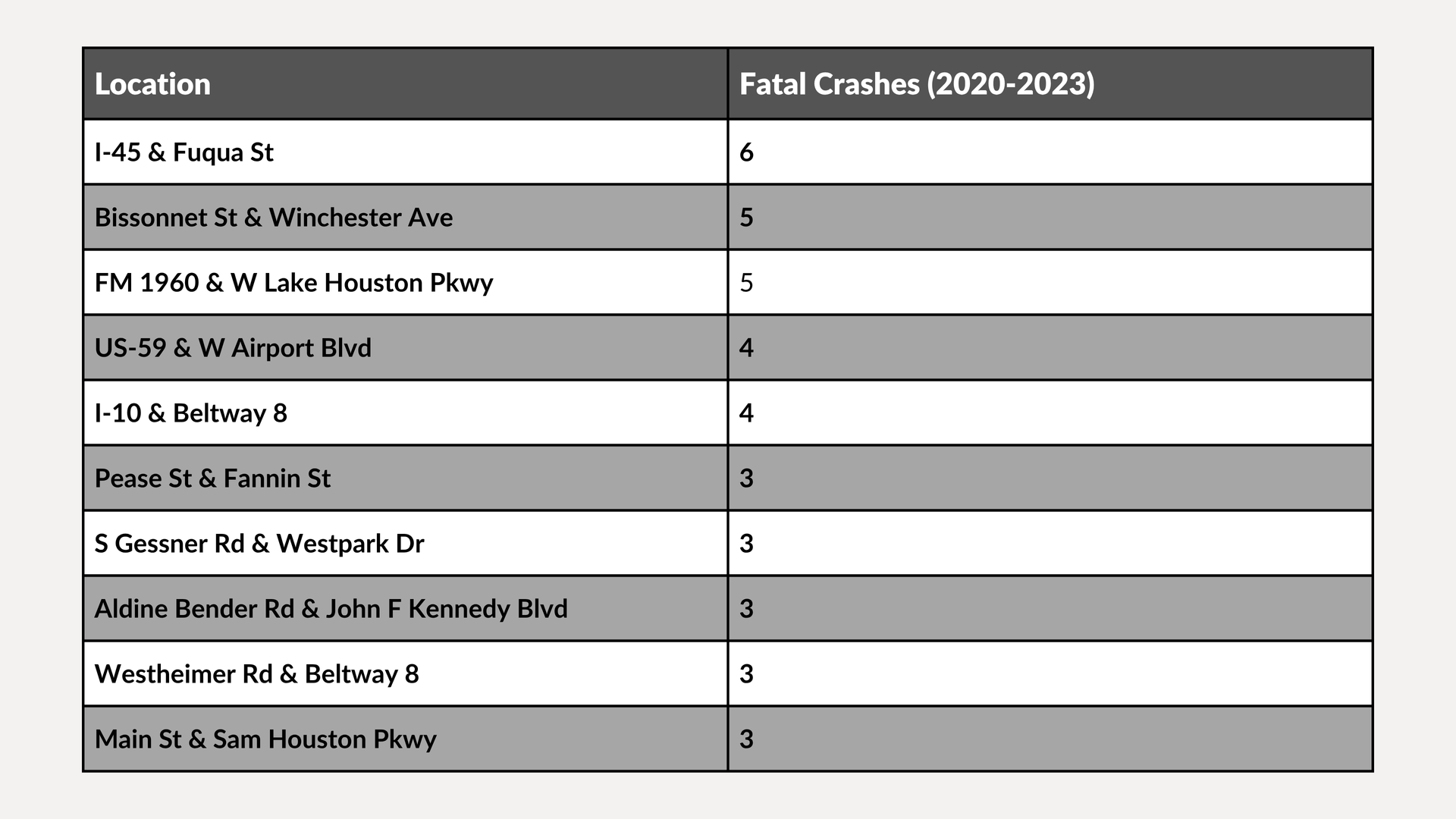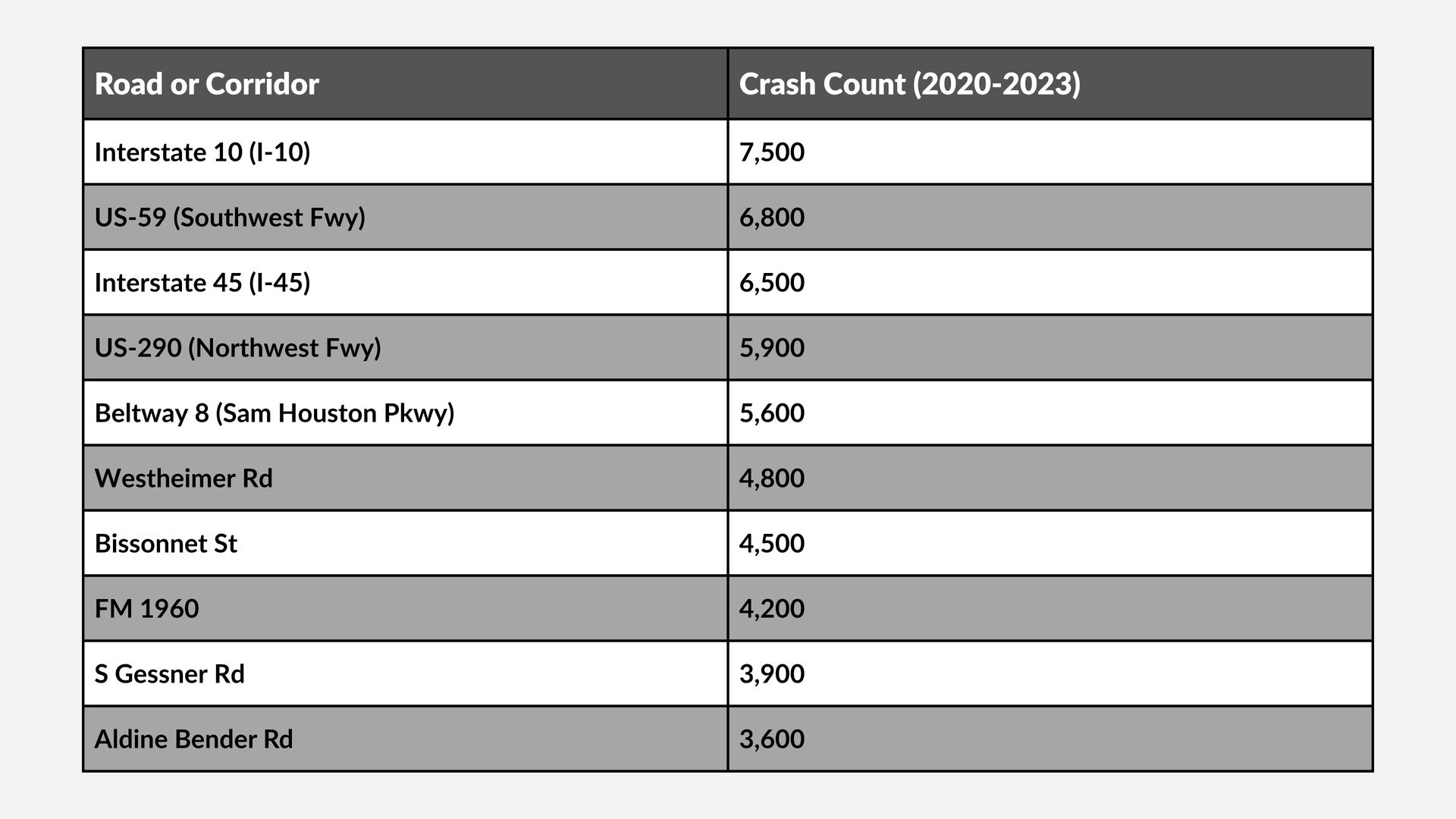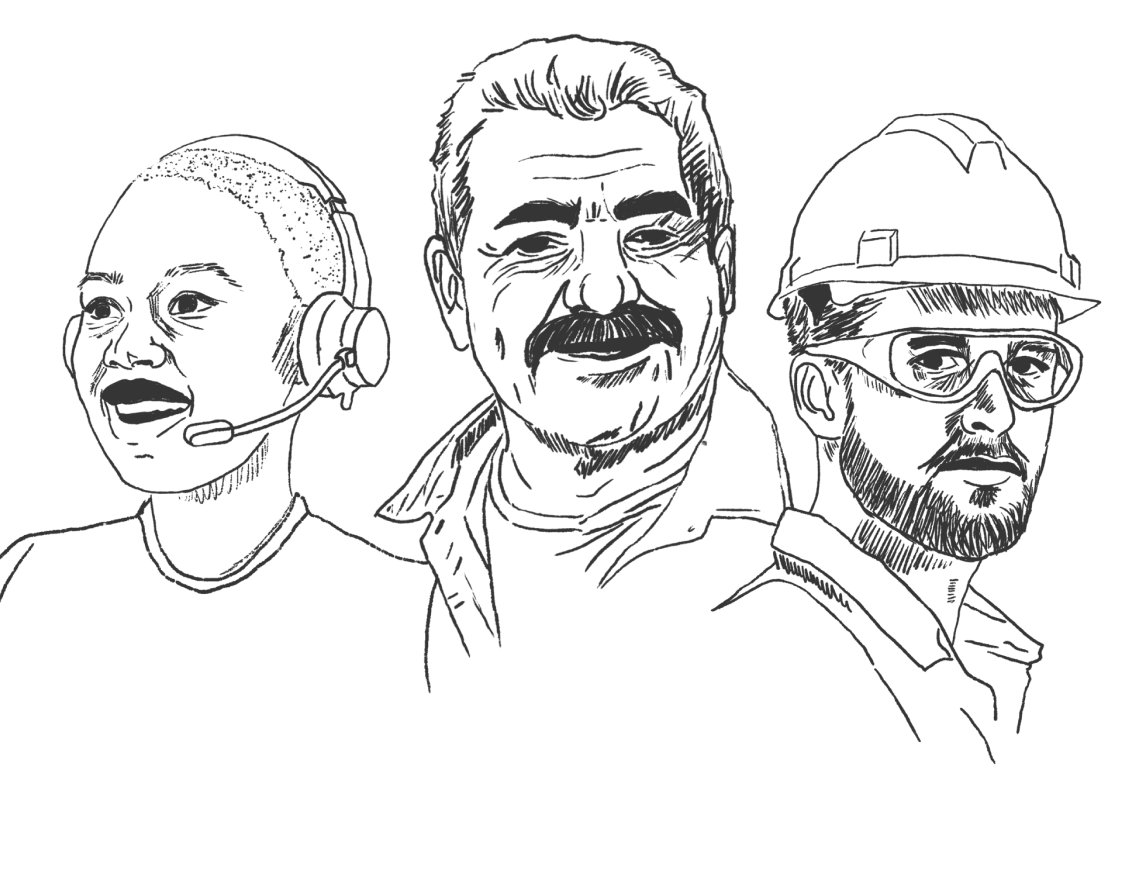Houston’s Riskiest Roads: Where Crashes Happen and How to Stay Safe
Houston is a difficult city to navigate because of its extensive freeways and busy intersections. As Texas’s largest metro with over 2.3 million residents, Houston sees a staggering 65,931 crashes annually, 178 every day, according to TxDOT’s Crash Records Information System (CRIS). From high-speed freeways like I-10 to crowded intersections near shopping districts, the city’s roads pose serious risks to drivers, pedestrians, and cyclists. Data from the Houston Open Data Portal, NHTSA’s Fatality Analysis Reporting System (FARS), reveal the most dangerous spots, why crashes happen, and how you can stay safe. Whether you are driving on I-45 for your job or running errands on Westheimer Road, this guide is designed to help A2X readers understand Houston’s crash hotspots and drive with safety and confidence.
Why Houston’s Roads Are So Dangerous
Houston’s roads are a perfect storm of high traffic volumes, outdated infrastructure, and risky driver behaviors. Major highways, such as I-10, ranked the 5th most dangerous road in the US, handle relentless commuter and commercial traffic, which is worsened by ongoing construction zones that cause sudden lane shifts and congestion. Intersections like Bissonnet St & Winchester Ave, with 220 crashes from 2015–2019, are plagued by complex signal patterns and heavy pedestrian activity near shopping centers. Speeding, a factor in 30% of Texas crashes (136,165 statewide in 2022), and distracted driving (84,887 crashes) are leading culprits, especially on multi-lane arterials like US-59. Pedestrian and cyclist risks are also high, with Houston reporting 152 pedestrian deaths in 2022 and 146 in 2023, often due to inadequate crosswalks and poor signal timing near busy areas.
Drunk driving continues to be a major threat, resulting in 1,162 deadly collisions throughout the state in 2023, and Houston's traffic fatalities of 289 are a dramatic indication of the sobering statistic. While we see a spike in collisions, in particular, during peak hours of from 3 PM - 8 PM, as well as late-night weekend hours from 6 PM - midnight, with a higher frequency of collisions near nightlife districts, Houston's Vision Zero initiative aims to resolve some of these dangerous circumstances while specifically focusing on the High Injury Network (HIN), which is only 7% of roads, but makes one 62% (89) of the fatal and severe crashes, and continues to be a slow pace of progress with $8 million for improvements in 2024. For the A2X readership, understanding the risks is the first step towards better driving and advocating for better road and driver facilitation.
Houston’s Most Dangerous Intersections
Navigating Houston’s intersections can feel like a high-stakes game, with heavy traffic, confusing layouts, and distracted drivers at every turn. Data from TxDOT CRIS, the Houston Open Data Portal, and law firm reports (2015–2019) pinpoint the city’s most crash-prone intersections, where injury and fatal crashes within 200 feet are alarmingly common. These hotspots, often near freeways or commercial zones, demand extra caution from drivers.

Bissonnet St & Winchester Ave currently ranks number 1, with 220 crashes. This intersection has the highest number of crashes in Houston due to the location of the shopping centers in the area and its complex signal patterns, which result in more T-bone crashes. FM 1960 & W Lake Houston Pkwy 2019 had the second-highest number of crashes at 200. In addition to the retail traffic, this location has freeway access and is prone to potential conflicts. Both of these intersections highlight the importance of better managing traffic and enhancing driver decision-making for all parties involved to help reduce crashes.
Houston’s Deadliest Crash Hotspots
Fatal crashes are a heartbreaking reality in Houston, often occurring on high-speed highways or at intersections with pedestrian exposure. Based on TxDOT CRIS and NHTSA FARS data (2020–2023), the following locations are Houston’s deadliest, reflecting risks from speeding, drunk driving, and inadequate pedestrian infrastructure.

I-45 & Fuqua St is the most deadly location in Houston, with six fatal crashes, which is likely due to the high speed of the freeway traffic combined with confusion on the access road. Bissonnet St & Winchester Ave is the next most fatal location with five fatalities. Bissonnet St & Winchester Ave is a particularly deadly location for pedestrians, which contributes to the overall pedestrian death rate in Houston. These examples emphasize the need for improved road design and enforcement of traffic laws.
Houston’s Most Crash-Prone Roads and Corridors
Houston's highways and major arterials are prone to crashes due to their configuration, which features heavy traffic and complex intersections. As identified by TxDOT CRIS and Houston Open Data Portal (2020-2023), these are the Houston area’s roadways with the most crashes. Crashes have more severe injuries and outcomes, from fender-benders to fatal accidents.

I-10, with 7,500 crashes, is widely regarded as the 5th most dangerous road nationally (US), due to its high number of crashes, many of which are related to Construction, and the lack of shoulders. US-59 and I-45 are ranked as hazardous highways in the US. Most get frequent rear-end and lane-change crashes. These roadways need extra vigilance during peak hours.
Where Serious Injuries Are Most Common
Serious injury crashes, which leave victims with life-altering consequences, are a major concern in Houston. TxDOT CRIS and Houston Open Data Portal data (2020–2023) highlight the locations with the highest number of serious (non-fatal) injury crashes, often involving pedestrians and cyclists.

Bissonnet St & Winchester Ave leads with 160 serious injury crashes, driven by pedestrian and cyclist incidents near commercial areas. FM 1960 & W Lake Houston Pkwy follows with 150, reflecting risks from multi-lane traffic and retail congestion. Houston’s 15,219 injury collisions in 2023 highlight the need for better safety measures.
When and Why Crashes Happen
In the Houston area, crashes are common during rush hours (3–8 PM), as commuter, delivery, and school traffic compete for road space on highways like I-10 and Westheimer Road. Late-night weekends (6 PM–midnight) are also unsafe, as impaired driving was responsible for 1,162 fatalities statewide in 2023. The biggest crash rates occur on Fridays and Saturdays, which are frequently linked to nightlife or weekend getaways. The primary contributors are:
- Speeding: A factor in 30% of Texas crashes, speeding reduces reaction time on highways like I-45.
- Distracted Driving: Responsible for 84,887 crashes statewide, distractions like texting are prevalent at intersections like Pease Street and Fannin Street.
- Failure to Yield: Accounts for 35,674 crashes statewide, leading to T-bone collisions at places like S Gessner Rd & Westpark Dr.
- Drunk Driving: A major factor in nighttime fatalities, especially near downtown and commercial areas.
Houston’s coastal weather, characterized by sudden rain and fog, poses additional risks, as does heavy commercial traffic from the Port of Houston and tourism around attractions like the Galleria.
Tips to Stay Safe on Houston’s Roads
- Slow Down on Highways: I-10 and I-45 are high-speed corridors. Stick to speed limits, especially in construction zones, to avoid collisions.
- Stay Alert at Intersections: Watch for pedestrians and cyclists at busy spots like Bissonnet Street and Winchester Avenue, and avoid distractions like texting.
- Avoid Nighttime Driving: Drunk driving spikes on weekends. Use rideshare services or designate a driver after dark, especially in the downtown area.
- Navigate Construction Carefully: Follow signage and reduce speed on I-10 and US-59, where lane closures are common.
- Plan for Congestion: Allow extra time during rush hours (3–8 PM) to avoid aggressive driving on crowded roads, such as Westheimer Road.
A2X Is Here for You After a Crash
Roads in Houston can become hazardous at any moment, catching victims and their families with injuries, medical bills, and emotional scars to deal with. At A2X, we are here for you and your loved ones during this difficult time. We can offer assistance and feedback about how to navigate and cope with the consequences of a crash. Whether your injuries are severe or you want recovery for a loved one, we can help you obtain recovery and hold negligent drivers accountable. Do not go at this alone. Contact A2X today; we are here for you!
Request a Consultation
Other Practice Areas







